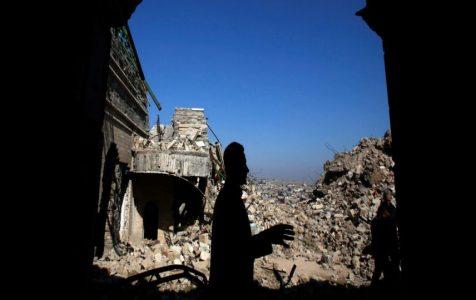
ISIS destroyed Jonah’s tomb but inadvertently unearthed more Biblical evidence
Archaeologists discovered an ancient palace and 2,700-year-old inscriptions about a biblical Assyrian king in tunnels the Islamic State dug under Jonah’s tomb.
ISIS bombed the biblical prophet’s tomb in 2014 and dug four tunnels beneath the Nineveh-located site to plunder artifacts and sell them on the black market. But where terrorists tried to wipe out the historical remnants, archaeologists recently made two, important biblical finds, according to Aleteia. Archaeologists announced in 2017 the sub-tomb tunnels led them to the accidental discovery of an ancient Assyrian palace. Their December 2017 published research recounts the rule of King Esarhaddon, who is mentioned in 2 Kings, Isaiah and Ezra.
“The palace of Esarhaddon, strong king, king of the world, king of Assyria, governor of Babylon, king of Sumer and Akkad, king of the kings of lower Egypt, upper Egypt and Kush [an ancient kingdom located south of Egypt in Nubia],” one translated inscription shows, according to Aleteia.
The inscriptions also avails Esarhaddon “reconstructed the temple of the god Aššur [the Assyrians’ main deity],” “renewed the statues of the great gods,” and rebuilt Babel and the city of Ésagila. Archaeologists also assert the king began rebuilding structures that were possibly the ancient Tower of Babel.
Esarhaddon reigned over Assyria between 681 and 669 BC. He fled to Nineveh after he and his brothers killed their father, Sennacherib, following his failed conquest of Jerusalem in 681 BC. After reaching Nineveh, Esarhaddon exiled his brothers and established himself as king.
ISIS’s destruction is due to their considering any religious shrine to be idolatry — despite the fact Jonah’s revered as a prophet in Islam (as well as Christianity and Judaism). Dangerous conflicts (e.g., ISIS terror) have raged in the region for decades, preventing archaeologists from studying or publishing their research. Archaeologists not only published their 2017 findings of the palace and the inscriptions in December but other discoveries they made in the region between 1987 and 1992, which could not be revealed previously (due to local militants’ chaos).
Source: Dailly Caller





